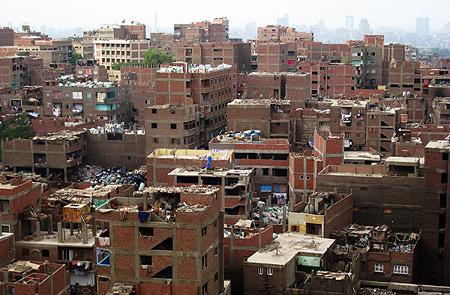Dola Bonfils and Michael Haslund-Christensen shared a desire to visualize and address the fact that more than half of the world's population already live in cities, a rate that is expected to rise to 80% by 2030: Who or what controls the development of megacities? How do we formulate visions for future urban living? What does this development mean to people who live in megacities? And what can people in the West learn from these wildly growing cities?
Essential partners
Danida, short for Danish International Development Agency, is an organisation under the Ministry of Foreign Affairs that funds public information efforts, including film production. DFI consultants have frequently collaborated with Danida on film projects, and Danida was immediately sold on the idea of films with wide appeal and direct broadcast access. Dola Bonfils explains:
"We formed a think tank with Danida to discuss possible subjects. Out of that came the idea to make a call for films on the theme of the enormous global and demographic challenge posed by the migration of people from rural to urban areas. A significant part of the framework was made possible by substantial early investments by the DFI and the Danish Broadcasting Corporation DR in developing the project."
At this point Danida stepped back, and the DFI and DR wrote a joint call for submissions, eventually selecting four proposals concerning cities in four different geographical regions: Africa, South America, the Middle East and South East Asia.
Shared Premise
"Cities on Speed" comprises four separate films by four different directors with widely different artistic temperaments. The films were to be conceived in the Danish tradition of character-based stories with a personal imprint. The directors had the artistic freedom to tell the stories their way.
But the four films were also intended to work as a series, jointly illuminating and perspectivising the central theme. To create the best possible starting point for production and promotion, it was essential to work within a shared framework.
"For starters, everyone needed a common level of knowledge," Michael Haslund-Christensen says. "Before making their first research trips, every director and producer involved took part in a workshop led by architects and urban planners to acquire some insight into the overall issue of urbanisation. As a further requirement, each production had to include a local partner in the designated city. We wanted to look at the cities not only from above, but also from within. Thirdly, the themes for the four cities would be examined vertically – that is, they would include the overall perspective of urban planning."
"It was an interesting process, in the discussions, to work towards the shared recognition that, yes, we do give a damn, the world really does concern us," Bonfils says. "Among Danish audiences it is our experience that every time we say 'the non-Western world', we get a friendly look back, saying, 'Isn’t that interesting, but what’s it to me?' But there's no getting around globalisation! We're responsible for the direction development is taking. We have exported methods and attitudes, and a lot of what we're seeing in the world's cities can be viewed as a projection of problems we already familiar to us on a smaller scale."
Old and new financing
The two DFI film commissioners consider a project like "Cities on Speed" an opportunity to investigate new paths for documentary film production and distribution, in terms of content, network forms and business models.
"Working with the industry, we need to explore new ways of doing things," Haslund-Christensen says. "Pitching the "Cities on Speed" series at the HotDocs Forum in 2008 in Toronto was a breeze. Backed by funds from the DFI, DR and DANIDA, the producers came in with a basic economy covering 60% of the production costs of fully developed projects with pilots, defined stories and logistical completion plans. That's highly unusual in international documentary film financing with high-end financing. In turn, within a relatively short time, we were able to bring in the remaining financing from international partners, which allowed us to maintain our creative momentum throughout the creative process and start principal photography within just a year of project initiation."
"It's been a learning experience for all parties to create the series," he says, adding that projects like "Cities on Speed" make it possible more clearly to identify the future obstacles and potentials of the documentary genre.
"We have gained new and valuable experiences in handling public and private financing with different industry players. We have employed new methods to optimise the artistic treatment of a complex theme and we see a host of untapped potentials for using such an extensive gathering of material on platforms other than broadcast. Hopefully, there will be opportunities to further develop those platforms in the future."
